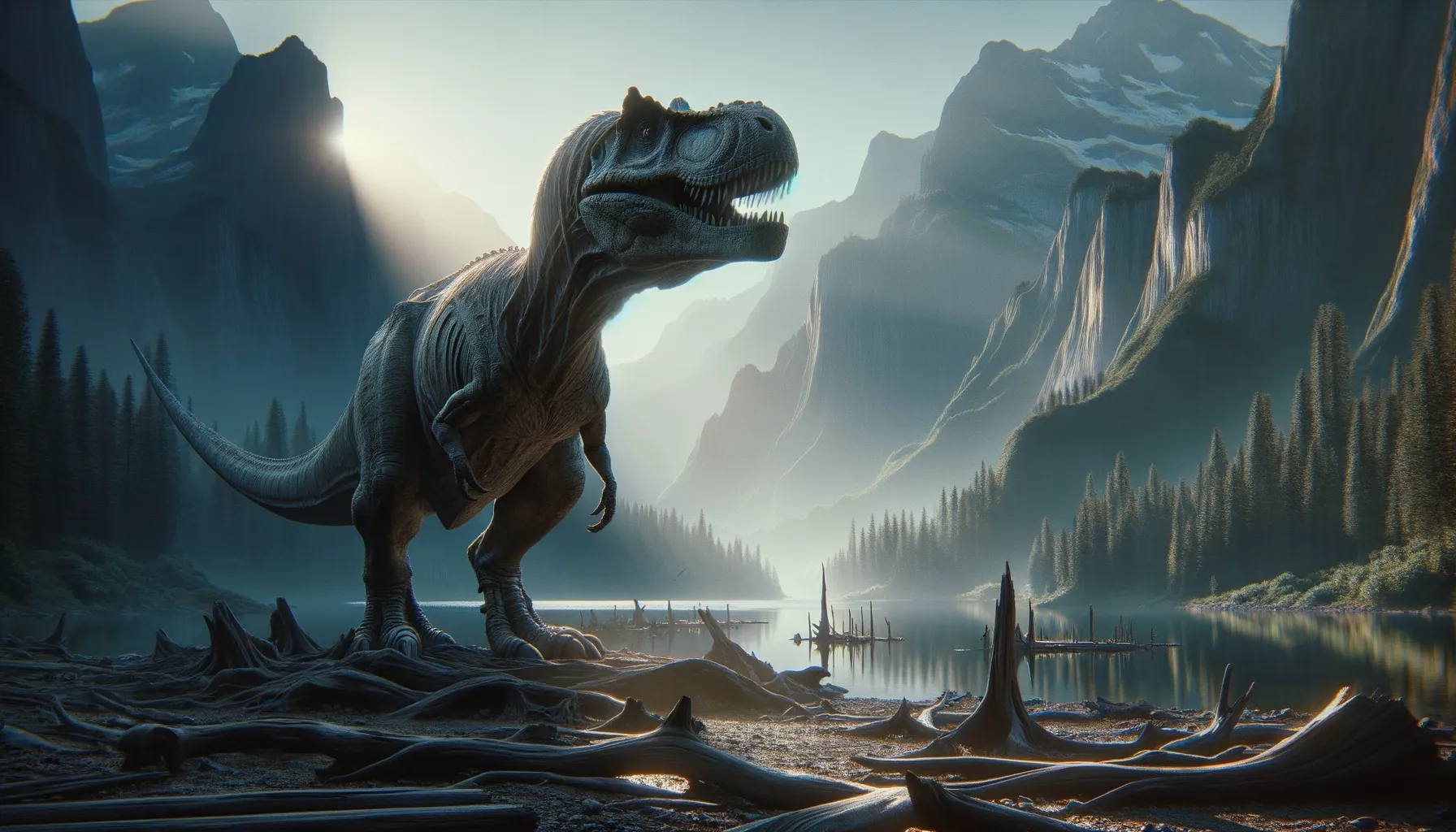
Xiongguanlong
A formidable early tyrannosaur predator.
Period
Cretaceous
Length
Measured roughly 4.5 meters in length.
Height
Stood approximately 1.5 meters tall.
Weight
Weighed around 300 kilograms.
Xiongguanlong was a medium-sized carnivorous dinosaur from the Early Cretaceous period. It belonged to the tyrannosauroid family, a group closely related to Tyrannosaurus rex. Despite its smaller size, it had powerful jaws and sharp teeth, indicating it was a capable predator. This dinosaur is significant because it provides insight into the evolutionary path leading to the larger, more famous tyrannosaurs of the Late Cretaceous.
Diet
Xiongguanlong was a carnivore that primarily hunted smaller dinosaurs and possibly scavenged for carrion. Its sharp teeth and strong jaws suggest it could efficiently process meat.
Hunting
With its moderate speed and agility, Xiongguanlong likely ambushed prey, taking advantage of its environment for stealth. Its hunting strategies would have involved stalking and sudden attacks to capture smaller, more vulnerable dinosaurs.
Environmental challenges
Xiongguanlong lived in a changing environment where vegetation and prey availability would have varied. Surviving required adaptability to fluctuating resources and climate changes. Competition with other predators also posed challenges, as they vied for the same food resources in their ecosystem.
Speed
Moderately fast for its size.
Lifespan
Estimated to be 15 to 20 years.
First discovery
Discovered in 2005 in China.
Fun Facts
- Xiongguanlong was a dinosaur that lived during the Early Cretaceous period, around 100 to 125 million years ago.
- It is considered a transitional species between early tyrannosaurs and the famous T. rex, sharing features of both.
- Xiongguanlong was relatively small compared to its gigantic relatives, estimated to be about 5 to 6 meters long.
- The name Xiongguanlong means 'Grand Pass Dragon,' highlighting the region in China where its fossils were discovered.
- Xiongguanlong is believed to have had a long and narrow skull, unlike the broader skulls of later tyrannosaurs.
- Scientists think Xiongguanlong may have had a keen sense of smell, helping it hunt prey effectively.
- The discovery of Xiongguanlong provided important insights into the evolution of large tyrannosaurids.
Growth and Development
The growth of Xiongguanlong involved a rapid juvenile phase, characteristic of many theropods, to reach its predatory size quickly. Like other dinosaurs of its kind, it would have developed distinct physical features like robust limbs and powerful jaws as it matured. Such traits would have had evolutionary benefits for survival and predation.
Habitat
Xiongguanlong inhabited regions that were likely semi-arid, with seasonal rivers and diverse plant life. This environment offered varied terrains, from open spaces for chasing prey to denser areas for hiding. The habitat supported a variety of dinosaur species, providing ample opportunities for its predatory lifestyle.
Interaction with other species
As a mid-level predator, Xiongguanlong interacted with various species, primarily targeting smaller herbivores. It likely avoided clashes with larger predators, but might have competed with other mid-sized carnivores for resources. Its role in the ecosystem included controlling the population of smaller herbivores and acting as both predator and occasional scavenger.
Natural lifespan
In natural conditions, it could live up to around 20 years.
Reproduction
Little is known about its reproduction, but it likely laid eggs like other theropods. Nesting behaviors might have included selecting concealed sites to protect eggs from environmental hazards and predators. Parental care remains speculative, with potential guarding of nests until hatching.
Social behaviour
Xiongguanlong is thought to have been primarily solitary, as suggested by most tyrannosauroid behaviors. Social interactions might have occurred during mating seasons or territorial disputes. Young individuals might have exhibited more sociable behaviors before becoming independent.
Fossil locations
Fossils of Xiongguanlong have been found in the Gansu Province of China. These discoveries have provided crucial information about the early evolutionary stages of tyrannosauroids. The well-preserved fossils offer insights not only into its physical traits but also into its ecological role.
